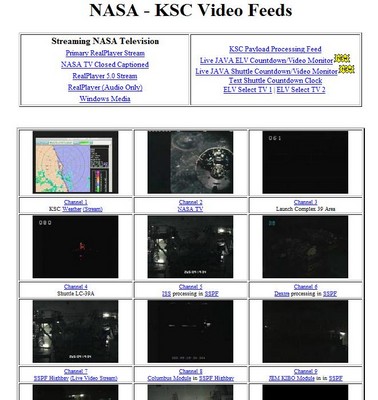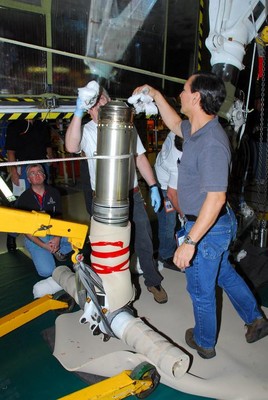
I just read on the NASA space shuttle homepage:
Sept. 23 at 5:30 p.m. EDT
The orbiter Discovery is parked in the transfer aisle of the Vehicle Assembly Building after rolling over from the Orbiter Processing Facility bay 3. First motion was at 12:22 p.m. EDT. This marks a prelaunch milestone.Overnight Discovery will be rotated to a vertical position, hoisted and attached to its external fuel tank and two solid rocket boosters for its upcoming mission, STS-120, to the International Space Station.
Space Shuttle Discovery will roll out to Launch Pad 39A approximately one week after rollover. The launch of STS-120 is currently targeted for Oct. 23.
This is excellent news. Looks like my reservations are still right.
But what does this all mean? And why was it necessary?
Orbiters are parked in special, smaller buildings called “orbiter processing facility” or OPF. This is where the majority of work is being done on them. For example, the strut repair happened there. As far as I know, orbiters are immediately moved to the OPF when they have arrived in Kennedy Space Center. Then they are checked, repairs conducted and prepared for the next mission. They are not, mated to either the tank or the solid rocket boosters – the OPF is simply too small to do that.
Instead, that is done in the “Vehicle Assembly Building”, or VAB for short. This is a gigantic building (see picture), where the boosters and tank are mounted and the shuttle is then mated to them. As I have now learned, shuttles are typically moved over to the VAB roughly a month before launch. There the mate happens and, I assume, also some further checks.
I requires good weather to move a shuttle from the OPF to the VAB. Thus this movement can easily be delayed, especially at this time of the year (just think about Florida’s frequent afternoon thunderstorms…). This time, we obviously had no or at least very little delay – which is, why we are still on the timeline.













